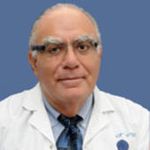

















What does Tel Aviv Sourasky Medical Center (Ichilov Medical Center) offer patients?
How many specialists are there and what accreditation's have been awarded to Tel Aviv Sourasky Medical Center (Ichilov Medical Center)?
A procedure referred to as the Coronary Angiogram, or while commonly known as a coronary angiogram, is a significant medical undertaking that permits Tel Aviv doctors to examine the circulatory structures within the heart. This procedure bears utmost importance in pinpointing and combating heart-related conditions like coronary artery disease and angina. The methodology involves the injection of a unique colorant via a catheter, a very slim tube, into the coronary arteries. This colorant helps to visualize the arteries through X-ray imaging, which aids doctors in detecting constrictions or obstructions.
The operation is typically conducted in a specially equipped health institution like a hospital or a clinic. It is of vital importance for patients to disclose their complete medical history and the medications they are currently on since these factors have direct implications on the Coronary Angiogram. Furthermore, certain medications may need to be paused temporarily, and patients may be advised against eating or drinking a few hours ahead of the procedure.
Recovery duration post-Coronary Angiogram can differ among individuals. Typically, you will be required to remain lying down for several hours after the process to avoid hemorrhage. Some individuals might experience minimal discomfort, like a hematoma or bruise around the catheter entry site. These symptoms normally recede after a few days.
Ordinarily, patients are advised to refrain from strenuous physical activities for at least a week, or as directed by their health care professional. Assuming there are no complications, you should be able to return to your work and regular activities after this time. A follow-up meeting is usually arranged within a week or two post-procedure to monitor your recovery and adapt your treatment strategy as necessary.
The Coronary Angiogram, often referred to as Coronary Angiogram, boasts a high efficiency rate, of an over 90% success rate. The procedure excels in identifying blockages in coronary arteries and assists in diagnosing numerous heart conditions.
However, it's crucial to understand that the procedure's success hinges on several factors such as the patient's age, overall health status, and the existence of any pre-existing conditions. Even though this procedure is typically safe, like any healthcare procedure, potential risks exist. It's advisable to discuss these with your healthcare provider in Tel Aviv.
















What does Tel Aviv Sourasky Medical Center (Ichilov Medical Center) offer patients?
How many specialists are there and what accreditation's have been awarded to Tel Aviv Sourasky Medical Center (Ichilov Medical Center)?
















What does Tel Aviv Sourasky Medical Center (Ichilov Medical Center) offer patients?
How many specialists are there and what accreditation's have been awarded to Tel Aviv Sourasky Medical Center (Ichilov Medical Center)?
CONTACT SUCCESSFUL